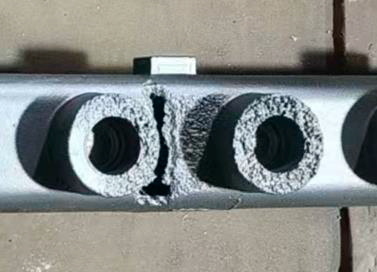In the production of aluminum parts, surface treatment plays a fundamental role in the quality and durability of the final product. But how do you determine which treatment or finish is best suited for your project? Edr Fittings Srl supports buyers and engineers on a daily basis in making the right decisions regarding finishes for high-quality aluminum castings. In this blog, we will discuss what to consider when determining the most appropriate surface treatment.
What is the Purpose of Surface Treatment?
Before selecting a specific finish, it is essential to establish its purpose. There are three main reasons for treating aluminum parts:
- Protection – against corrosion, wear, or chemical agents.
- Aesthetics – for a high-quality or uniform appearance.
- Functionality – such as conductivity, coating adhesion, and enhancement of mechanical properties.
For example, in the field of electronic components, a conductive surface treatment may be required, while in other cases, the focus is on corrosion resistance or visual uniformity. For comprehensive information on aluminum finishing techniques, industry standards provide detailed guidelines.
The Production Process Influences Surface Treatment
Aluminum components can be produced using different manufacturing techniques. Each technique follows a different process and therefore results in a component with distinct specifications.
For instance, sand casting and gravity casting often result in a rough surface that may need to be worked on before applying the final finish.
Low-pressure aluminum die casting produces a smoother surface but may exhibit micro-defects that can affect coating adhesion or anodizing.
From the design and engineering phase of the component, the desired specifications for the final product should be considered to ensure that the production process and the desired finish are properly aligned. Our expertise in precision tolerances ensures optimal results.
Choosing the Finishing Technique
There are several finishing options available for aluminum parts, each with its own specifications:
- Anodizing – creates a hard, wear-resistant oxide layer with decorative possibilities.
- Powder Coating – provides a strong and durable color layer with various finish types.
- Chroming – suitable as an intermediate layer resistant to corrosion or for electrical applications.
- Polishing or Brushing – gives an attractive finish or prepares the surface for further treatments.
Considering Tolerances and Size
Surface treatments can influence dimensions. Especially with products that have tight tolerances, it is essential to consider thicknesses and surface treatments already in the design phase. We help you optimize the design so that the final product meets all functional and dimensional requirements after finishing.
Collaboration for Cost-Effective Production
Edr Fittings Srl has extensive experience in both the production process and the treatment of aluminum parts. By involving us early on, we can advise on material selection, tolerances, and the most suitable production and finishing techniques. This helps avoid surprises in the later stages of production and ensures efficient and cost-effective manufacturing. Professional guidance on industry standards and specifications is crucial for optimal results.
Tips for Surface Treatments for Aluminum Castings
Choosing the right surface treatment for aluminum parts is more than just an aesthetic choice; it is a key component of the design and procurement process. By considering the desired function, production process, and technical requirements, you can work with an experienced partner like Edr Fittings Srl to create the optimal solution.
Contact Us
Need personalized advice on the finishing of your aluminum parts? Contact us. Our specialists are here to help you.


